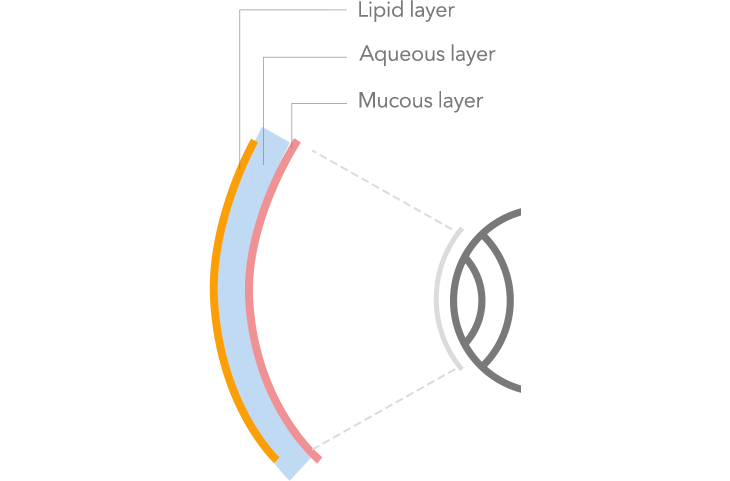What causes it?
Dry eye can come from a number of causes, both physical and environmental. One common cause is when tear glands slow down tear production – a normal occurrence that happens with age.
Tear quality may also be the cause of dry eyes. In a normal tear, there are three layers– mucin, aqueous, and lipid layers. These three layers work together to provide the proper amount of moisture, distribute moisture evenly across the cornea, and prevent evaporation that can cause eyes to become dry. If any of the three layers is compromised, the eye may not get the nourishment and protection it needs. Most commonly, there is not enough lipid in the tears, leading to the evaporation of the tear film, resulting in dry eye.

Diminished tear production may be associated with certain medications, such as:
- Antihistamines
- Birth control pills
- Diuretics
- Cardiovascular medications
- Pain relievers and anti-inflammatories
Find relief.
Dry Eye syndrome is a chronic condition that, while it may not be completely curable, can be improved through the use of artificial tears. Consult with your eye care professional to determine the cause, which will guide your treatment strategy.

Following this link opens a new browser tab and sends you to a website outside of Bausch + Lomb website. Confirming that you want to continue, should open a new tab and open the destination website.